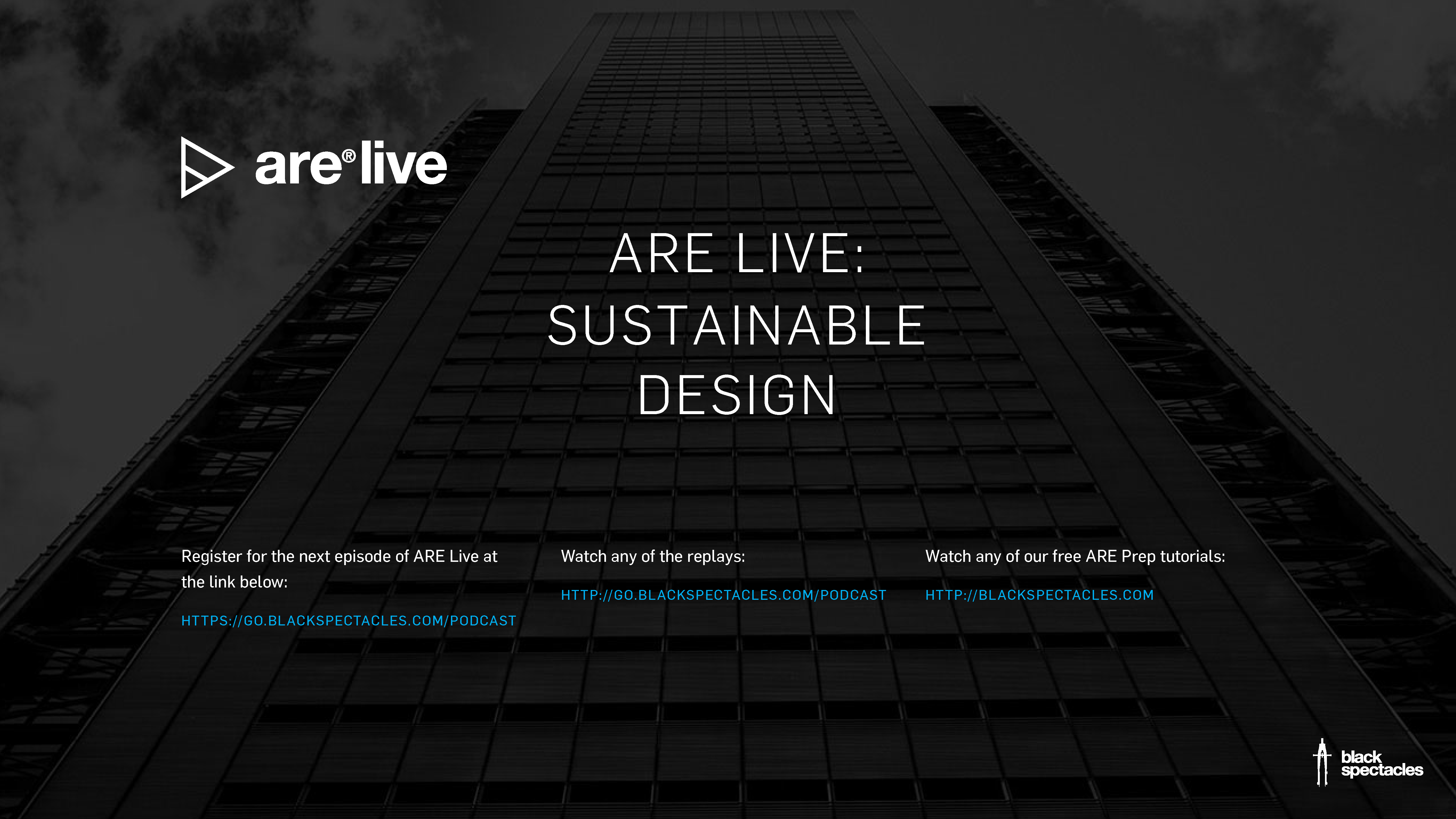ARE Live: Sustainable Design
Learn how sustainability concerns can show up on the ARE 5.0. This episode explores how sustainability relates to PA, PDD, and PPD.

Sustainability is a broad topic, and it can be overwhelming to know exactly what to study to be prepared for the ARE 5.0. In this episode, we're going to be providing some guidance on how sustainability is approached on different divisions of the ARE 5.0—specifically looking at PA, PPD, and PDD.
Sustainability on the PA Exam: Examining the Site
First up, PA. Sustainability on the PA exam tends to focus on environmental considerations of your building site. And when you think about it, this makes sense for PA: You're in the planing stages of a project, you're analyzing the site, but you're not quite designing the building just yet.
So when it comes to the ARE, you're going to see questions about environmental reports and testing, like in the first practice question here, and also about things like stormwater management, which you'll see on the second practice question.
Familiarize yourself with key terms
In the first question, the answers pull from a lot of different key terms and concepts that you'll need to know before taking the ARE. A lot of times people taking the ARE will focus on terms relating to new builds, new construction—but questions about renovations can show up too, so you also need to be pretty well-versed in terms relating to those kinds of projects as well.
But, it's also important to note that the ARE probably won't ask you too many basic retention questions. You won't be asked "What's a buyer retention pond" and given four answers where one of them is simply the definition.
Instead, the ARE will ask questions that require you to put your knowledge of key terms into practice. You'll need to be able to apply your knowledge of vocabulary to a scenario, as we do in the second practice question here related to stormwater management.
Sustainability on the PPD Exam: Designing Buildings
So in the PA division, you're examining your site and figuring out what kind of environmental issues you're going to need to solve for in the PPD stage of your project. Here, you'll start to design the building, and can start addressing some of your findings in PA through design, orientation, and sizing of the systems.
Understand what the question is really asking
In sample question three, all of the answers are things that you would probably want to include in a project where you're renovating a 1950's home. But when you're faced with these kinds of questions on the ARE, you need to be able to identify what specifically the question is asking you for.
When you're moving fast on exam day, it can be easy to quickly read the first answer and think it seems reasonable and then move on. You want to make sure you're reading the question carefully and identifying exactly what it's trying to get at, so you can chose the most correct answer for that specific question.
Sustainability on the PDD Exam: Getting into the Details
When you get to PDD, questions about sustainability really get into the details that you'll be expected to produce during the construction documents phase of a project. And one of those considerations is finalizing material selections to meet certain sustainability criteria. In doing so, you might be considering the embodied energy or embodied carbon of those finished materials, and you'll probably be asked to calculate values of wall assemblies for permit documentation.
Taking definitions a step further
Question five in this episode asks you not only to understand what the definition of embodied carbon is, but also to be able to take that definition a step further and apply that definition to the materials in use in the question.
While some questions on the ARE will ask you to consider a really specific situation, some will be more broad like this one. You'll simply need to know about a term and really understand what goes into that concept in order to be able to answer the question.
To see more detailed explanations of all these questions and how to work through them, check out the recordings below!
Subscribe:
